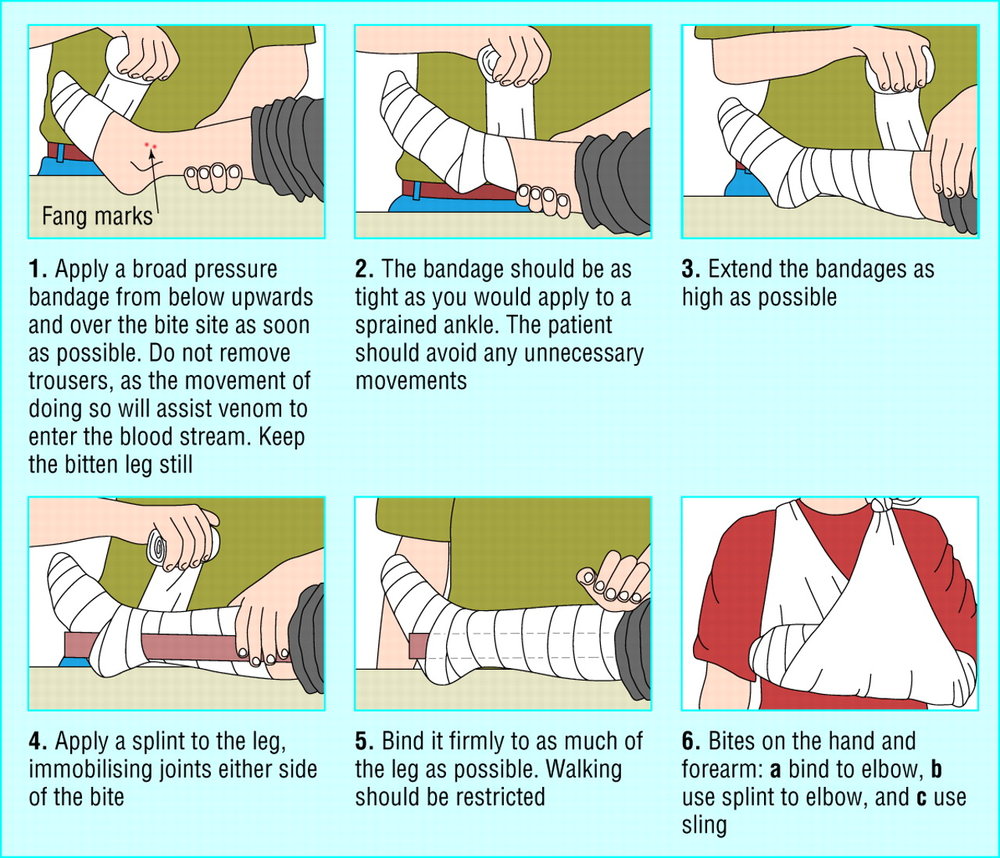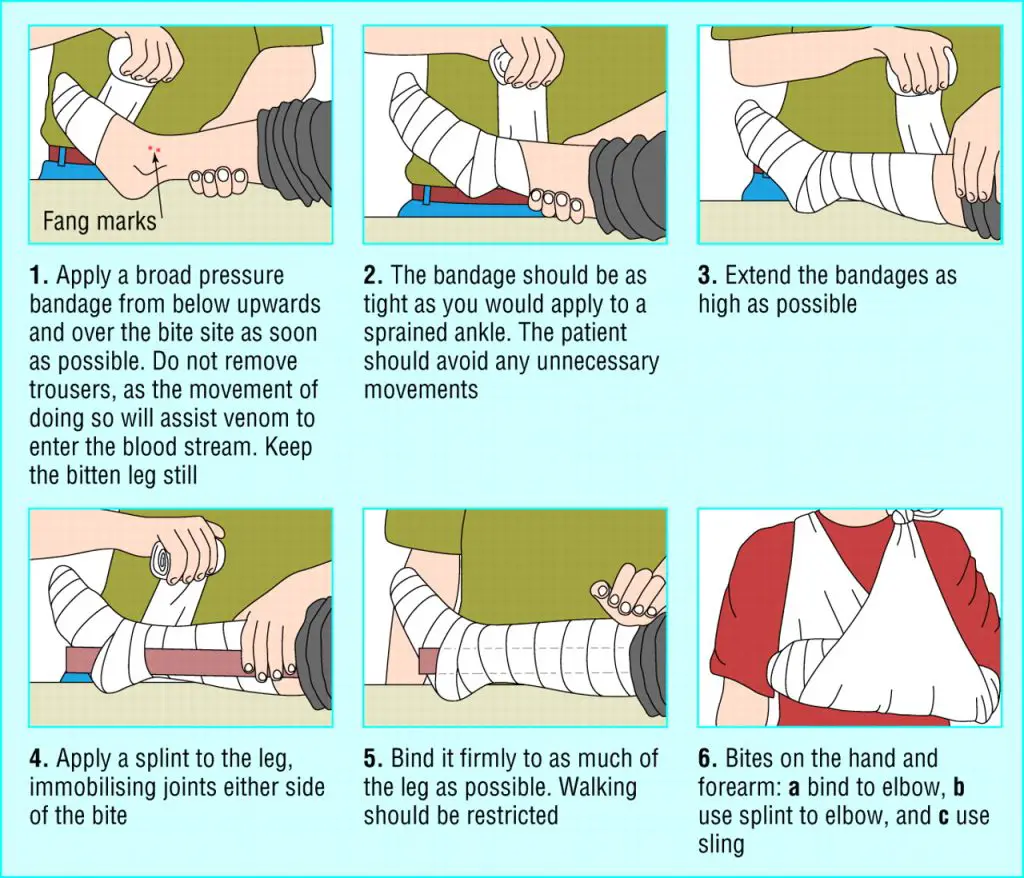Rattlesnake bites are not only painful but can also be life-threatening. If you live in an area where rattlesnakes are common, it’s important to know what to do in case of a bite. Here’s a guide on how to treat a rattlesnake bite and increase your chances of a full recovery.
First and foremost, it’s important to stay calm and seek medical attention as soon as possible. While waiting for help to arrive, there are steps you can take to minimize the effects of the venom. With the right knowledge and prompt action, you can increase your chances of a full recovery. Let’s dive into the details!
If you’re bitten by a rattlesnake, seek medical attention immediately. While waiting for medical help, keep the affected limb immobile and below the heart level to slow down the spread of venom. Do not apply ice or a tourniquet, as this can worsen the injury. Try to remember the snake’s appearance for identification.

How to Treat a Rattlesnake Bite?
Rattlesnake bites can be a serious medical emergency, and prompt treatment is essential to prevent potentially life-threatening complications. If you or someone you are with has been bitten by a rattlesnake, it’s essential to seek medical attention immediately. In this article, we will discuss the steps you can take to treat a rattlesnake bite before help arrives.
Step 1: Stay Calm and Call for Help
The first thing you should do if you are bitten by a rattlesnake is to stay calm. Panicking can increase your heart rate, which can cause the venom to spread more quickly throughout your body. You should call for emergency medical services immediately, and try to stay as still as possible to prevent the venom from spreading.
It’s important to note that you should never attempt to capture or kill the snake. This can put you at further risk of being bitten and can make it more difficult for medical professionals to identify the type of snake that bit you.
Step 2: Remove Tight Clothing and Jewelry
One of the first things medical professionals will do when treating a rattlesnake bite is to remove any tight clothing or jewelry that could restrict blood flow. This is especially important if the bite is on an arm or leg.
If you are unable to remove the clothing or jewelry yourself, don’t worry. Medical professionals will take care of this when they arrive.
Step 3: Keep the Bite Below Heart Level
Keeping the bite below heart level can help slow the spread of venom throughout your body. If possible, lay down and keep the affected limb elevated. This can help reduce swelling and pain.
Step 4: Clean the Bite Wound
It’s essential to clean the bite wound thoroughly to help prevent infection. Use soap and water to wash the area around the bite. Don’t apply ice or cold packs to the wound as this can cause damage to the skin and underlying tissues.
Step 5: Don’t Cut the Wound or Attempt to Suck Out the Venom
Contrary to popular belief, cutting the wound or attempting to suck out the venom can do more harm than good. These methods can cause additional tissue damage and increase the risk of infection.
Step 6: Apply a Bandage
Once the wound is cleaned, apply a sterile bandage to the bite area. This can help protect the wound from further trauma and help prevent infection.
Step 7: Monitor Vital Signs
It’s important to monitor your vital signs, including your heart rate, breathing, and blood pressure, while waiting for medical professionals to arrive. If you begin to experience symptoms such as difficulty breathing, chest pain, or swelling in the face or throat, seek immediate medical attention.
Step 8: Receive Treatment for Rattlesnake Bite
Once you arrive at the hospital, medical professionals will assess the severity of the bite and administer appropriate treatment. This may include medication to reduce pain and swelling, antivenom to counteract the effects of the venom, and antibiotics to prevent infection.
Step 9: Follow-Up Care
After receiving treatment for a rattlesnake bite, it’s essential to follow up with your healthcare provider. They can assess your progress and monitor for any potential complications, such as infection or delayed allergic reactions.
Step 10: Prevention
Preventing rattlesnake bites is the best way to avoid the potential for serious complications. When spending time outdoors in areas where snakes are common, wear long pants and closed-toe shoes. Avoid walking through tall grass or brush, and be cautious when stepping over logs or rocks.
In conclusion, if you or someone you know is bitten by a rattlesnake, it’s essential to stay calm, seek medical attention immediately, and follow the steps outlined above. With prompt treatment and proper care, most people recover fully from rattlesnake bites without any long-term complications.
Frequently Asked Questions
If you’re ever bitten by a rattlesnake, it’s important to act quickly. Knowing how to treat a rattlesnake bite can mean the difference between life and death. Below are some frequently asked questions about treating rattlesnake bites.
What should I do if I get bitten by a rattlesnake?
If you get bitten by a rattlesnake, the first thing you should do is call 911 or your local emergency services. While you’re waiting for help to arrive, try to stay calm and still. Keeping your heart rate low can help slow down the spread of venom. Remove any tight clothing or jewelry near the bite site, and position the affected limb so that it’s below the level of your heart. Do not try to suck out the venom or cut the bite site.
Once you receive medical attention, the doctor will likely administer antivenom to counteract the venom. They may also clean and dress the wound and monitor your vital signs to make sure you’re stable.
Can I treat a rattlesnake bite at home?
No, you should not try to treat a rattlesnake bite at home. Rattlesnake venom can be deadly, and the only way to counteract it is with antivenom. While you’re waiting for medical help to arrive, you can take steps to slow down the spread of venom, such as staying calm and still, removing tight clothing or jewelry, and positioning the affected limb so that it’s below the level of your heart. But do not try to suck out the venom or cut the bite site.
The best course of action is to call 911 or your local emergency services and wait for medical help to arrive. They will be able to administer antivenom and provide any other necessary medical treatment.
How long does it take to recover from a rattlesnake bite?
The recovery time from a rattlesnake bite can vary depending on the severity of the bite and how quickly medical attention was received. In general, it can take several weeks to fully recover from a rattlesnake bite. During this time, you may experience symptoms such as pain, swelling, and bruising around the bite site, as well as nausea, vomiting, and difficulty breathing.
Your doctor will likely monitor your vital signs and provide any necessary medical treatment, such as antivenom or pain medication. They may also recommend follow-up appointments to make sure you’re healing properly.
How can I prevent getting bitten by a rattlesnake?
The best way to prevent getting bitten by a rattlesnake is to be aware of your surroundings and take precautions when you’re in areas where rattlesnakes are known to live. Wear protective clothing such as boots and long pants, and avoid walking through tall grass or other areas where snakes may be hiding.
If you see a rattlesnake, give it plenty of space and do not try to approach it or handle it. If you’re hiking with pets, keep them on a leash and be extra cautious around rocky areas or other places where snakes may be hiding.
What should I do if I see a rattlesnake?
If you see a rattlesnake, the best thing to do is to give it plenty of space and do not try to approach it or handle it. Rattlesnakes are venomous and can be dangerous if provoked. If you’re hiking with pets, keep them on a leash and be extra cautious around rocky areas or other places where snakes may be hiding.
If the rattlesnake is in an area where it poses a threat to humans or pets, you can contact your local animal control or wildlife agency for assistance. Do not attempt to handle the snake yourself.
When Snakes Bite: Pre-Hospital Care
In conclusion, treating a rattlesnake bite requires quick and efficient action. The first step is to stay calm and call for medical assistance immediately. While waiting for help to arrive, keep the affected area immobilized and lower it below the heart level to slow down the spread of venom.
It’s important to avoid any kind of movement or exertion that can increase the heart rate and accelerate the venom’s circulation. Applying a tight bandage around the bite area is not recommended, as it can increase the risk of tissue damage and worsen the symptoms.
Remember, prevention is always better than cure. Avoiding areas where rattlesnakes are known to inhabit, wearing protective clothing, and being aware of your surroundings can reduce the risk of getting bitten. Stay safe and informed, and always seek medical attention if you suspect you have been bitten by a rattlesnake.


